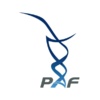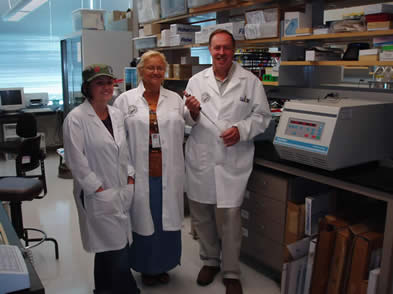迪伦Ĵ | 丙酸血症 | Age 2 1/2
迪伦结果表明:J出生在10月 12日, 2013 在沃科尼亚, 明尼苏达, 在称重 8 英镑, 2 ounces. 后迪伦诞生, 医生发现他有一个低于平均体温, 所以他们把他带回幼儿园温暖他,. 他被带回美国, 并从那里出来两天, 我们经历了一个正常, 健康的小男孩, 或者我们是这么认为.
在十月的清晨 15日, 只要 15 因为我们时间已经出院作为一个家庭的 3, 迪伦在演戏那样的陌生. 他很困, 似乎寒冷的触感. 我的老公, 亚当, 我把他的温度,他是在 95 度. 明知是不正常的, 我叫我的妹妹- 在- 法, 谁是NICU护士在这里的城市, 她告诉我们要尝试做皮肤上的皮肤温暖他,, 如果没有工作, 到大概拨打值班儿科医生. 但令我们失望, 一个小时过去了,他没有回暖所有, 即使一切后,我们曾尝试. 我叫值班的儿科医生,他告诉我们,看他在接下来的几个小时, 如果他仍然寒冷,还是很昏昏欲睡,不想吃, 我们可以等到把他带到儿科医生办公室那天早上在上午8点开, 或者我们可以带他到急诊室. 约一小时后, 我的丈夫拿起迪伦高达带到我这里来尝试和饲料, 而他的手臂无力地跌他的身体背后. 这是烙在我的脑海里的图像. 我们知道在那一刻,什么是错, 所以我们收拾他,在他的汽车座椅和开车把他送到急诊室. 一旦出现, 他们打量了他一下, and told us that since babies can’t tell us what’s wrong, they would need to do many blood tests and a spinal tap to narrow down what was going on. I remember the ER doctor telling us it was hard to watch little babies get pricked so he told us to go wait in another room (little did I know I would witness far more worse that these pokes in Dylan’s life to come). Dylan’s breathing also started to become extremely labored, he was really trying hard to get each breath in and out. I don’t remember how long we were in the room, but I do remember the doctor coming and telling my husband and I, they didn’t have any results back yet, 但他们认为,他需要在明尼阿波利斯市中心被转移到一家儿童医院, 把他上呼吸机, 因为他正从工作,所以难以呼吸过于疲惫. 他离开房间, 我失去了它, 呼吸机, 我的小宝贝? 什么问题? 后来,医生回来说, 他居然相信他们也许可以只是尝试氧气, 所以他们在楼上他转移, 他们的新生儿重症监护病房, 看看我们可以得到它的控制之下.
就在那时, 该等待比赛开始. 他们做了多次验血, 在一个点来得出结论,他只是脱水. 他的血糖非常低, 而且他们认为他只是没吃饱. 时间过去了, 我们都在等待这并围绕多个郊区医院巡视的新生儿, 到达并期待在迪伦. 大约午饭时间, 医生走了进来,看着他,并告诉我们他认为迪伦仍然需要被转移到儿童医院的呼吸机被投入,因为氧气本身没有削减它. 当他告诉我们这, 一名护士走进来, 递给他一张纸, 到他看着, 回答说:“噢,我的天哪”, 离开房间. 我们被吓坏了, 但没想到的太多了吧. 几分钟后,他回来了,并告诉我们,迪伦的氨水平 900. 他看着我们很迷茫的脸,并告诉我们,这是非常, 很严重, 该正常范围是 10-35, 而迪伦可能不能使它. 我记得麻木, 的想法,我的品牌新的婴儿可能会死, 当一个小时前,我们刚刚还以为他是脱水. 医生离开了设立救护车把迪伦, 还没到儿童医院了, 但是到了明尼苏达大学儿童医院, 因为他需要特殊处理, 只适用于大学. 他需要放在透析.
我在迪伦救护车骑, 而这些都是最长 45 我的生活分钟. 我记得当时我想他会在救护车死, ,有什么我可以做, 我只是在前排座位坐起来祈祷. 当我们赶到医院, 它像一个场景动画的, 所有这些医生一拥而上我们, 告诉我,他们会一直在等待, 解释是怎么回事, 需要我签同意书,开始透析. 告诉我,在做透析 3 天大的婴儿是非常危险的, 但什么其他选择,确实我们有? 当我们来到他的氨已攀升至医院 1200. My husband and I, 和我们的家庭, 被领进我们等着听迪伦上的字家庭候车室. 就在这个时候,我们被介绍给我们的代谢医生. 她来了,遇见了我们,并描述了她相信Dylan有. 一种罕见的遗传疾病, 在那里,他不能正确分解蛋白质, 而不是将它分解, 他只会分解到某一个点,然后坏事 (丙酸和氨), 将备份在他的系统. 同在一处高,因为它是, 它被毒害他的器官. 他们告诉我们,他们认为他的大脑肿胀,什么脑损伤他从高氨氮收到他们不能肯定, 他们将采取超声波和核磁共振检查, 这两者出来相当不错的, 但真正的时间会告诉.
许多小时后, 透析开始, 和一名护士进来, 并且说的话, 我永远不会忘记“我知道这一直是你生命中最糟糕的一天, 但我想给你一些好消息, 迪伦的氨是90“! 一样快,他生病了, 他得到了更好的一样快. 他们能够赶迪伦的新生儿筛查结果和证实了他丙酸血症诊断. 医生现在有一个诊断,并能对他进行治疗. 随着日子一天天的过去了ICU, 他氨稳定, 他们能够开始他Propimex和母乳的低蛋白饮食, 他居然真的很好. 我们能够刚过回家 7 在ICU天.
生活之后迪伦似乎去非常好, 和对我们是“正常”的. 他是一个很好吃, 总是吃蛋白,他需要在一天获得热量的量和被正常显影. 我每天会检查他酮在他的尿 (我们的医生认为我是检查与其说是一个有点疯狂, 但它是我的指标是事关), 而且他们总是消极的,直到他正要 5 months old. 迪伦几乎每天开始获取跟踪小酮在他的尿. 我们将努力推动更多的流体, 但他们仍然会涨回去. 他正在吃他所有的瓶子非常好动,演戏完全正常. 但, 一旦我们看到酮, 我们将带来他在急诊室,他的氨会很高, 在100的. 最可怕的是, 他从来没有演过不同, 从未表现出他的招牌氨高, 除了酮.
在二月至五月间的暂时进出医院周后, 我们的代谢医生决定开始他Carbaglu, 以帮助保持他的氨检查. 当我们从医院在四月下旬开始Carbaglu后出院, 我们遇到了与我们的代谢医生跟进预约. 正是在这个约会迪伦的医生坐在我们失望,并告诉我们,她认为迪伦需要肝脏移植. 你看, 他们从来没有能够告诉我们某些如果Dylan有PA与否的一个更严重的情况下,, 因为基因检测已完成后,, 它回来了,无论他的突变从未见过. 所以,我们种不得不等待,看看他怎么做. 我们被震惊了, 从未有过,我们认为肝移植手术会是这样,我们将讨论对迪伦. 我和我丈夫回家了几个星期想过这个问题, 祈祷吧, 哭一下吧, 它研究, 其他家长有故事,已通过了这, 并最终决定,我们不想等到另一场危机发生的迪伦和他有脑损伤或更糟, 我们希望迪伦保持迪伦. 所以在五月 8日 今年, 当迪伦 7 months old, 我们放置在移植名单迪伦获得一个新的肝脏.
On July 24日, 我们得到了他们有一个新的肝脏迪伦通话. 我们丢弃我们在做什么,并跑到了医院,他们做了所有的手术前的准备工作, 我们准备, 又等了字何时机关将在明尼苏达州和手术时将开始. On July 26日, 手术发生. 我丈夫和我走迪伦到运前的房间,把他交给移植小组. 我们被引导到我们与家人等待着家庭候车室 8 时间很长. 当外科医生走了出来, 在他的脸上露出了笑容, 并告诉我们,它已经非常顺利, 它是这样一种解脱. 我们被带到了我们能够看到迪伦PICU, 和害怕,因为我是看他, 当我们做, 他看起来那么好. Yes, 他迷上了这么多管和线, 他被肿, 但他看起来就像我们的孩子. 我们住在医院 18 天视迪伦恢复. 他的身体接受了新的肝脏非常好, 和我们生命中最美好的时刻之一, 是当我们的新陈代谢医生进来告诉我们,他们对迪伦采取手术已经显示后有机酸测试,他在他的身体没有任何丙酸! 这真是一个奇迹.
这是近 2 因为迪伦年有他的移植,他是做奇妙. 他曾因为并发症少,但他通过他们得到出色. 迪伦将在抗排斥药物,他的一生. 有说他可能进入拒绝在任何时候恐惧, 但如果发现及时, 这是非常可治疗. 在这里,在明尼苏达州, 与我们的医生, 他们将保持非常密切关注他. 我们还没有关于如果肝脏会持续一生大量的研究, 或者,如果他需要一个新的最终, 但在同一时间, 我们没有对什么PA确实给体长期一吨的数据. 我们的代谢医生正在非常谨慎与他, 他们让他在他的代谢公式只是直到去年10月,我们想看看他有什么实验室做了,如果他走了它,到目前为止,他一直保持稳定. 他仍然在限制蛋白饮食, 现在他得到30-35克,每天. 因为移植在他的变化一直十倍. 之前,他曾语气低沉而现在他的语气是如此美好, 他运行,并爬上就像所有其他 2 ½当我们打岁在公园! 虽然这是最艰难的决定,我的丈夫和我都做过, 这是一个正确的决定对我们, 我们希望迪伦带领他可以最好的生活, 而且,即使有这么多风险, 我们不知道 100% 什么样的未来将举行, 这是值得的, 因为他是如此开心,也很健康 2 ½岁的小男孩!

